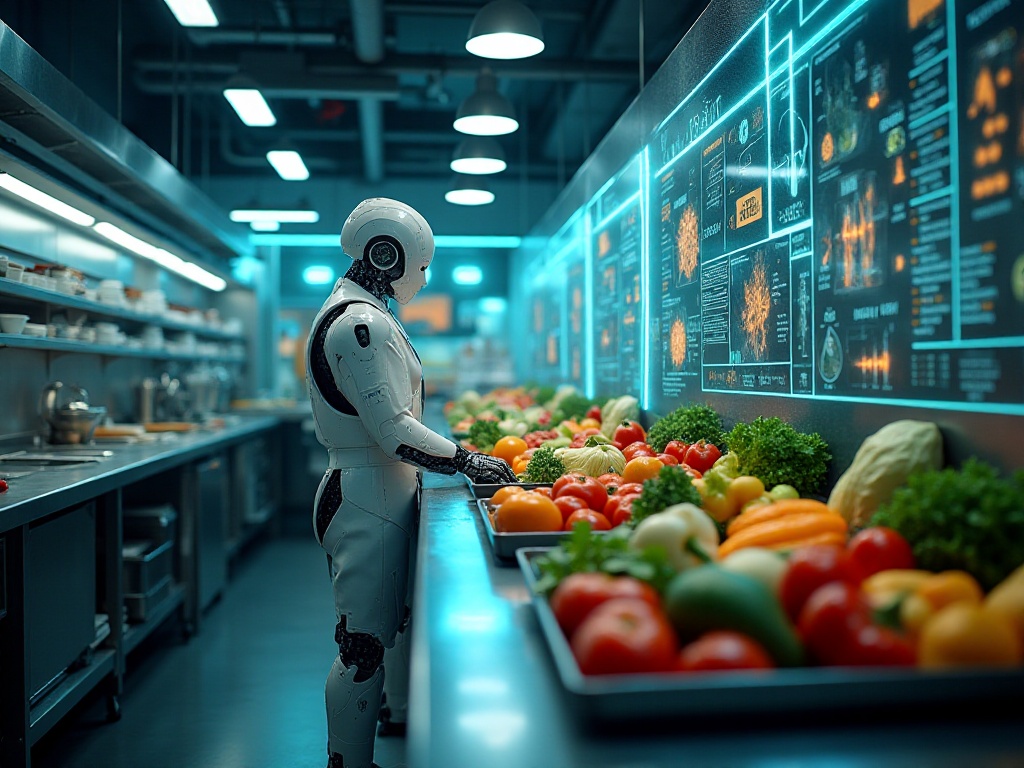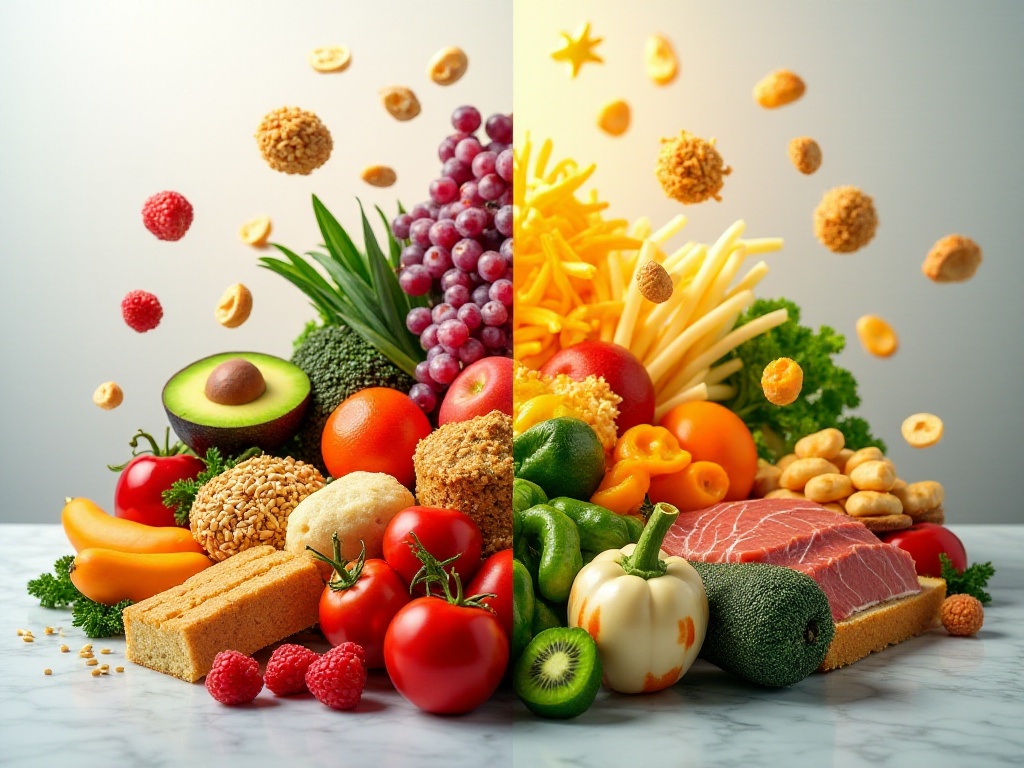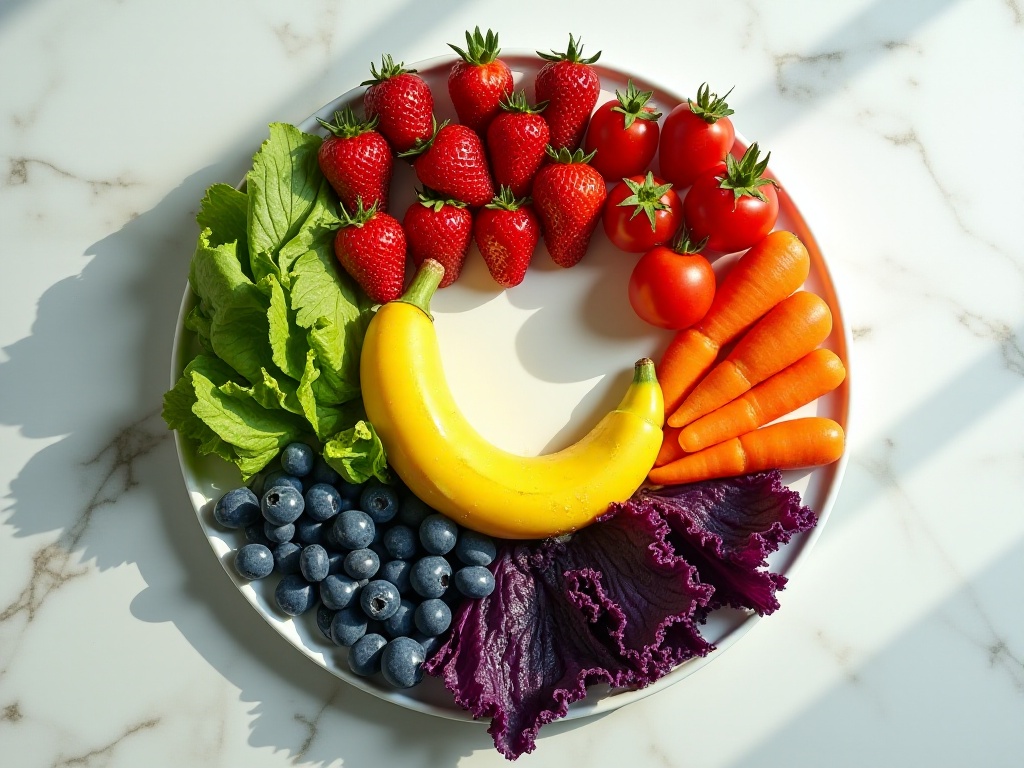As a newcomer to the workforce, I face a daily morning dilemma: waking up late leaves no time for breakfast. I end up ordering takeout, grabbing buns and fried dough sticks, eating while rushing to catch the subway. Lunch is even worse - with the product manager frantically pushing deadlines, I spend my lunch break in meetings, settling for a convenience store sandwich gulped down with coffee. By evening, after finally finishing work, I drag my exhausted body home with barely enough energy to shower, let alone cook. Might as well order takeout again.
To be honest, I didn't think this was a problem at first. After all, isn't this how everyone lives in major cities like Beijing, Shanghai, Guangzhou, and Shenzhen? Until one day, I met a senior colleague who had worked in the internet industry for ten years. Not only was she incredibly capable at work, but she also maintained a healthy glow and abundant energy. What amazed me most was that she managed to maintain healthy eating habits every day. After seeking her guidance, I finally understood the secret.
Truthfully, before meeting this mentor, my understanding of nutrition was very superficial. In my mind, feeling full was all that mattered - I hadn't given much thought to what I was eating. I would casually grab something when hungry, drink coffee when tired, and snack during late-night overtime work to stay alert.
But as work pressure increased, I clearly felt my body deteriorating. I often experienced unexplained dizziness, heart palpitations, stomach pain, and was particularly prone to fatigue. By chance, I saw my mentor's health check report - all indicators were perfect. This made me start reflecting on my eating habits.
Through systematic study of nutrition, I discovered that healthy eating actually follows patterns. It's not simply about dieting or eating vegetarian, but achieving nutritional balance in daily meals. Simply put, it's about properly balancing the three major nutrients: carbohydrates, protein, and fat.

When carbohydrates are mentioned, many people's first reaction is "eat less." Indeed, various weight loss information emphasizes controlling carbohydrate intake. But after deeper understanding, I discovered the key isn't how much you eat, but what kind of carbohydrates you eat.
Quality carbohydrates should come from whole grains, such as brown rice, oats, whole wheat bread, etc. These foods not only contain abundant dietary fiber but also allow blood sugar to rise steadily, avoiding dramatic fluctuations.
Now I wake up ten minutes earlier every morning to prepare a healthy breakfast. My most common combination is: a bowl of hot oatmeal with some blueberries, a handful of nuts, and a drizzle of honey. This breakfast is not only delicious but provides sustained energy, keeping me energetic throughout the morning.
At lunch, I choose brown rice or whole wheat bread. Though the texture might not be as refined as white rice, it helps me avoid afternoon drowsiness. If I'm too busy, I'll keep some whole wheat bread in the office - at least it's healthier than instant noodles.
In the evening, I moderately reduce carbohydrate intake but don't eliminate it completely. Usually, I'll have a small bowl of brown rice or a slice of whole wheat bread, paired with vegetables and protein. This way, it neither affects sleep nor leaves me hungry in the middle of the night.
Regarding protein, many people think eating meat is enough. But actually, there are many sources of quality protein. Through learning, I discovered that 10-35% of our caloric intake should come from protein. This ratio seems scientific but isn't easy to achieve in practice.
To ensure protein intake, I now make detailed weekly meal plans. For example, I eat fish on Mondays and Thursdays, preferably deep-sea fish like salmon and tuna, as they contain not only quality protein but also omega-3 fatty acids. Tuesdays and Fridays are for chicken breast, a favorite among fitness enthusiasts for its low fat and high protein content. Wednesdays and Saturdays are for beef or lamb to supplement iron. Sundays are mainly soy-based products, giving the digestive system a slight break.
Besides animal protein, I also pay special attention to plant protein. Tofu, edamame, and soy milk are all good choices. Sometimes when I get home late, I'll make a glass of pure soy milk - it satisfies hunger and provides nutrition.
If you're into fitness like me, supplementing with some protein powder is also a good choice. But be sure to choose reputable brands, and don't rely entirely on protein powder - it's best to get protein from natural food sources.

When it comes to fat, many people's first reaction is "stay away." But through learning, I understood that like carbohydrates, the key is choosing the right type. We should indeed try to reduce saturated fat intake, such as animal fats and butter. However, we also need to consume appropriate amounts of unsaturated fatty acids, which are very important for health.
Now I basically cook with olive oil - though it's more expensive than regular cooking oil, it's worth it considering the health benefits. I also eat nuts like walnuts, almonds, and cashews, but need to control the amount as nuts are quite caloric.
Avocado is one of my favorite sources of healthy fat. I often spread it on whole wheat bread for breakfast or make it into salads. Though not cheap, it's highly nutritious and particularly filling.
When eating out, I try to avoid fried foods, choosing steamed, boiled, or cold dishes instead. If I really want fried food, I'll use an air fryer, which greatly reduces oil usage.

Besides the three major nutrients, supplementing vitamins and minerals is also important. At first, I was randomly taking all kinds of supplements - Vitamin C, Vitamin E, calcium tablets, iron tablets - my medicine cabinet almost became a supplement showcase.
Later I learned that rather than taking various supplements, it's better to get nutrition directly from food. This not only improves absorption rates but also avoids the risk of over-supplementation.
For example, calcium and Vitamin D can be obtained from dairy products and dark green vegetables. Now I drink a glass of milk every morning and include dark green vegetables like broccoli and spinach with lunch and dinner.
Potassium can be supplemented through foods like bananas, potatoes, and spinach. I particularly enjoy eating a banana after exercise - it replenishes potassium ions and quickly restores energy.
Dietary fiber supplementation is even simpler - fruits, vegetables, and whole grains all contain abundant dietary fiber. Now I ensure I eat half a kilogram of vegetables and two fruits daily. Though it might seem troublesome, after getting used to it, I've found it's actually the simplest and most effective way to supplement nutrition.

Easier said than done - to truly achieve healthy eating, some specific practical techniques are needed. Through this year's exploration, I've summarized some useful tips.
First is planning. Every weekend I spend about an hour on meal prep. Specifically, I list out next week's meal plan, then buy all needed ingredients at once. I cut what needs cutting, cook what needs cooking, and store everything in containers in the refrigerator. This way, I won't resort to convenience foods on workdays due to lack of time.
Second is preparing a portable thermal bag. It can contain healthy snacks like fruits, nuts, yogurt. This way, when hungry at the office or working overtime, you won't buy junk food to fill your stomach. I now keep regular supplies in my office drawer: a box of almonds, several apples, some sugar-free oatmeal packets - convenient and healthy snacks when hungry.
Third is developing a recording habit. I now use a phone app to record daily food intake, including types, quantities, and calories of food. Through recording, I can clearly see what problems exist in my eating patterns and improve accordingly. For example, through recording I discovered my protein intake was low, so now I particularly focus on increasing quality protein intake.
Most importantly is gradual progress. Don't expect to completely change your eating habits at once - that's likely to backfire. Start with small changes, like switching breakfast from fried dough sticks to whole wheat bread, snacks from chips to nuts, drinks from cola to water. After these small changes become habits, gradually increase the difficulty.

Looking back on this year's healthy eating journey, I've indeed experienced many setbacks and difficulties. At first, every time I saw colleagues eating fried chicken and fries, I was especially tempted to give up. But after persisting, I really experienced significant changes.
Now I not only maintain a more ideal weight but also have much better energy than before. I used to always feel sleepy, but now rarely experience afternoon drowsiness. My skin condition has also improved, with a healthier glow. Most importantly, I've found a healthy lifestyle that I can maintain long-term.
I want to especially thank that mentor for her guidance. She helped me understand that healthy eating isn't about completely giving up good food, but learning to make wiser choices. It's okay to indulge occasionally, but know when to stop. For example, during weekend gatherings, I'll still enjoy hotpot or barbecue with friends, but pay more attention to healthy eating during weekdays.
This balanced attitude has allowed me to truly turn healthy eating into a lifestyle rather than a burden. I believe that with persistence, everyone can find their suitable healthy eating plan. I hope my experience can provide some inspiration, and welcome everyone to share their healthy eating insights in the comments.
 Previous
Previous



